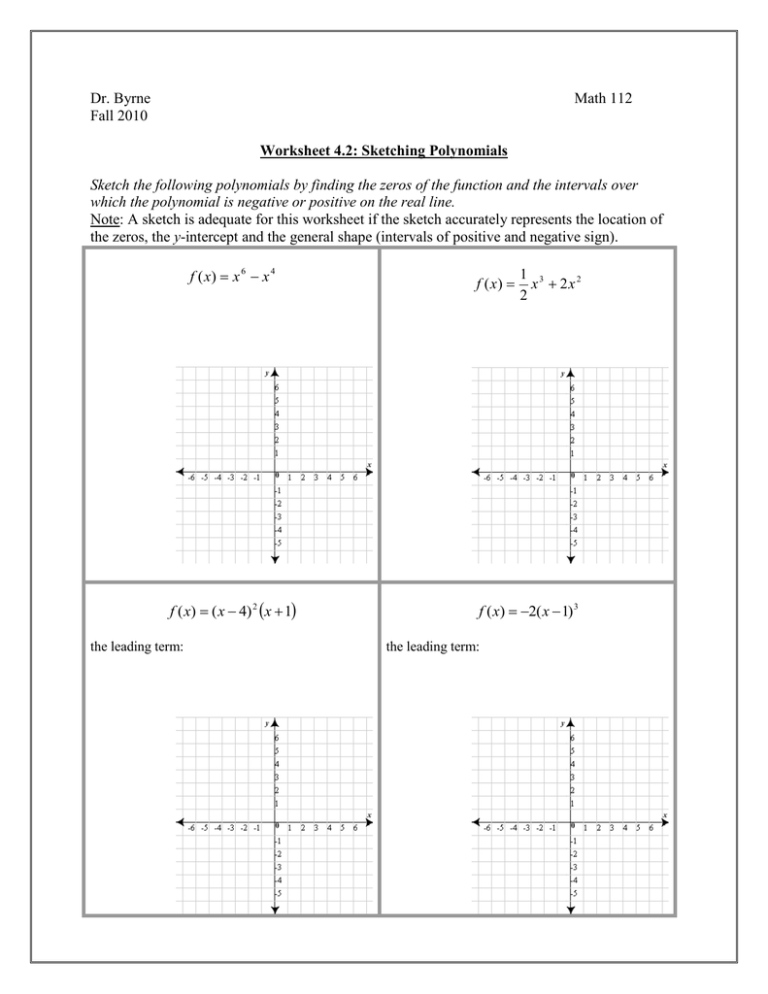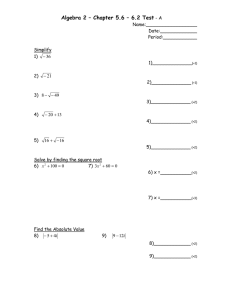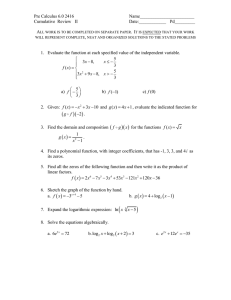Dr. Byrne Math 112 Fall 2010
advertisement

Dr. Byrne Fall 2010 Math 112 Worksheet 4.2: Sketching Polynomials Sketch the following polynomials by finding the zeros of the function and the intervals over which the polynomial is negative or positive on the real line. Note: A sketch is adequate for this worksheet if the sketch accurately represents the location of the zeros, the y-intercept and the general shape (intervals of positive and negative sign). f ( x) x 6 x 4 f ( x) ( x 4) 2 x 1 the leading term: f ( x) 1 3 x 2x 2 2 f ( x) 2( x 1) 3 the leading term: Worksheet 4.2: Relationship between zeros and bends. Draw a continuous, smooth function that intercepts the x-axis in exactly 4 locations. With as many ‘bends’ as you can fit: With as few ‘bends’ as you can fit: The number of zeros a polynomial has places an [ upper ] / [lower] bound on the number of bends a polynomial has: A polynomial with n zeros will have ________________ bends. Worksheet 4.2: Intermediate Value Theorem Suppose you know the following points are on the graph of a continuous function. Where do you know there must there be a zero? There must be a zero: Intermediate Value Theorem: For a real polynomial function P(x), suppose that P(a) and P(b) are of opposite signs. Then the function has a real zero between a and b. Example: Use the intermediate value theorem to prove that P( x) x 2 2 has a zero between x=1 and x=2.




